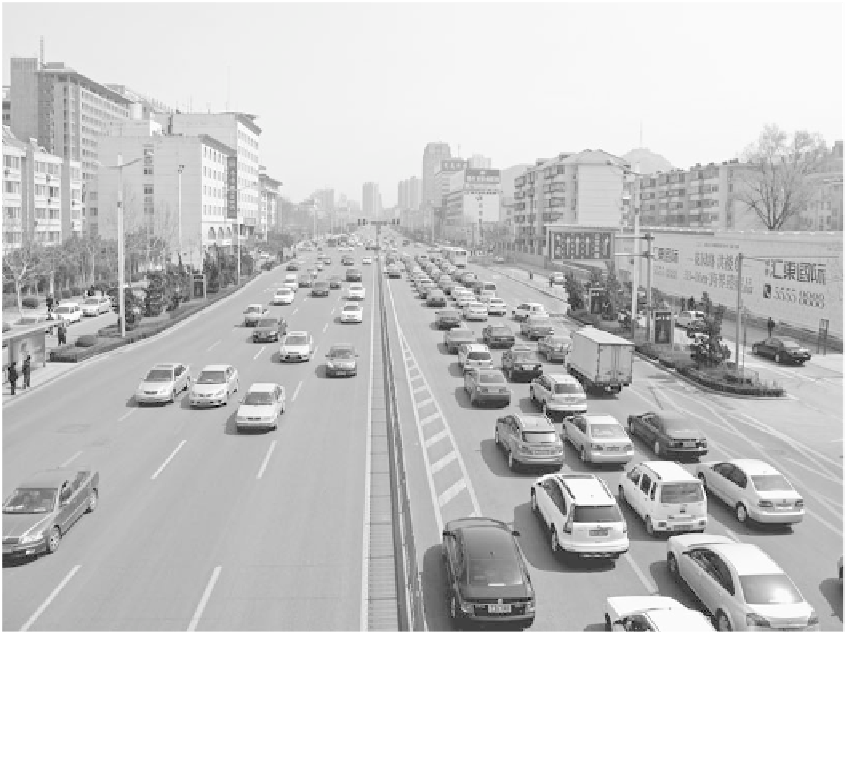Environmental Engineering Reference
In-Depth Information
The case study used to illustrate the transport issues associated with the rapidly growing
urbanisation in China is the city of Jinan. Jinan is a sub-provincial city, located on the east
capital of Shandong and in recent years it has evolved into a major administrative, economic
and transportation centre, with a population of 6.4 million and average annual GDP per capita
of US$9,800 (64,000 CYN). The city is booming economically, with a current GDP growth
rate of 17.7 per cent (China National Bureau of Statistics, 2009). The modern-day name of
Jinan derives from 'south of the Ji' (waters), referring to the old Ji River that flowed to the
north of the city. The Ji River disappeared in 1852 when the Yellow River changed its course
to the north.
Like many Chinese cities, Jinan is currently undergoing rapid urbanisation. The city's urban
area has expanded from 24.6 km
2
in 1949 to 295 km
2
in 2008 (Jinan Statistics Bureau, 2009).
Jinan's population has increased over time primarily due to the migration of the agricultural
population and young graduates. Jinan has a monocentric and irregular sprawl pattern, with
direct jurisdiction over six urban districts (Lixia, Licheng, Huaiyin, Tianqiao, Changqing and
Shizhong), one county-level city (Zhangqiu), three counties (Pingyin, Shanghe and Jiyang),
and over 6 million people under its jurisdiction. With growth to the south constrained by hilly
topography and to the north by the Yellow River, Jinan's 2004-2020 Master Plan proposes
Figure 6.10
Traffic congestion is becoming a large problem, as the road capacity cannot keep up with the
demand for road space


